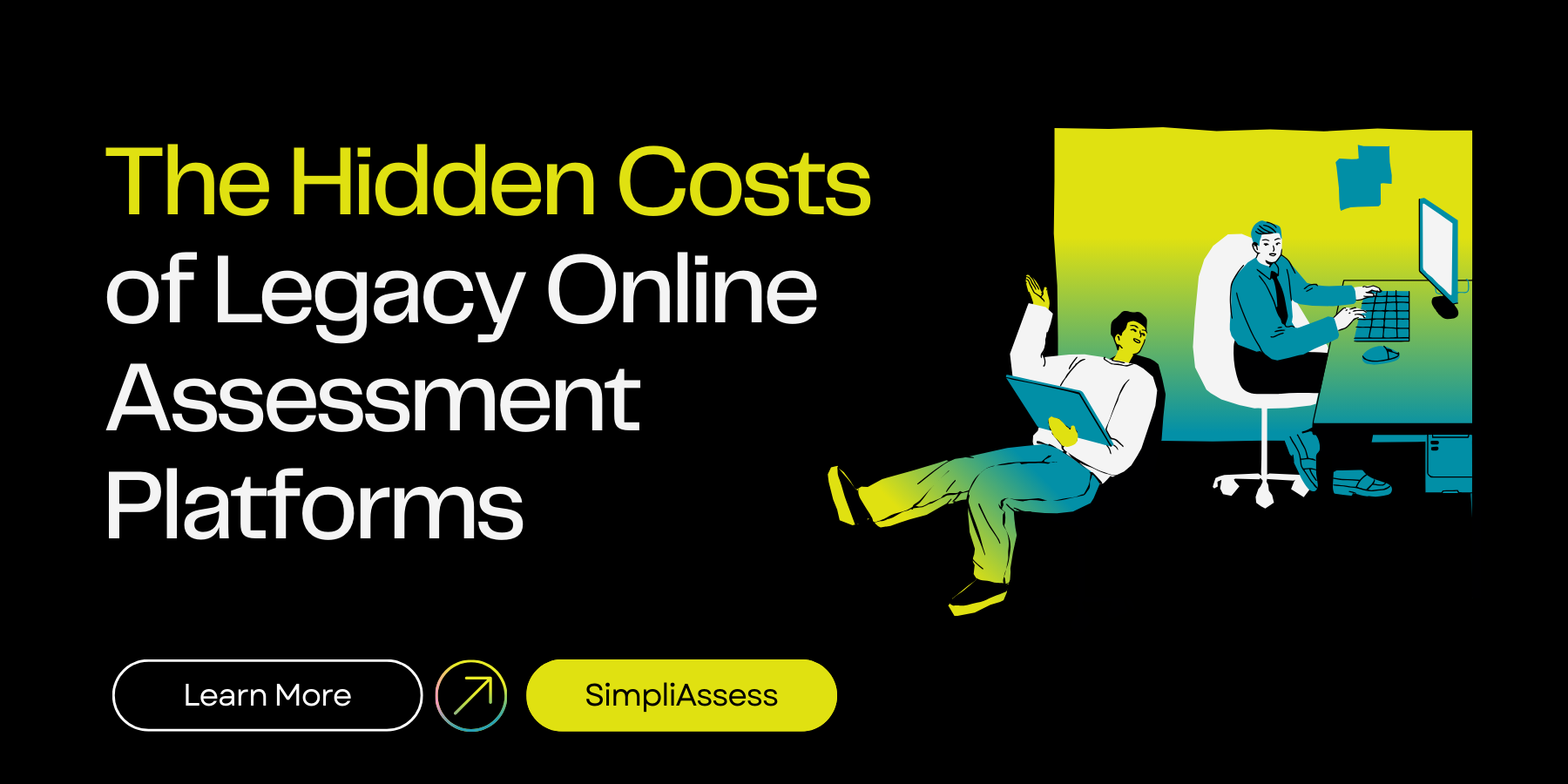
The Hidden Costs of Legacy Online Assessment Platforms: Why Migrating Makes Financial Sense
Introduction
In today’s digital era, online assessment platforms have become an indispensable tool for educational institutions and businesses alike. These platforms streamline the assessment process, offer scalability, and provide valuable insights into performance metrics. However, relying on legacy online assessment platforms can come with hidden costs that may hamper productivity, limit growth, and drain financial resources.
Legacy online assessment platforms can rob organizations of valuable time and resources, resulting in a disproportionate amount of money going towards maintaining outdated systems.
The financial impacts of legacy online assessment systems are often indirect, resulting from inefficiencies, increased administrative costs, decreased productivity, and potential missed opportunities.
In this article, we explore the drawbacks of outdated systems and shed light on why migrating to modern solutions makes financial sense.
Inefficient Workflow Management
Legacy online assessment platforms often lack user-friendly interfaces and robust workflow management capabilities. Administrators and educators find themselves struggling with complex and time-consuming processes, such as test creation, distribution, and result analysis. These inefficiencies not only waste valuable time but also lead to increased costs due to the need for manual intervention. Migrating to a modern assessment platform can streamline workflows, automate tasks, and save valuable resources.
Cost of Downtime
It’s also important to consider the cost of downtime. Legacy systems can suffer from regular disruptions and slow response times, resulting in lost productivity. Switching to a modern platform eliminates these issues, resulting in much higher efficiency and allowing organizations to focus on their core objectives without any disruption.
Limited Scalability
Legacy platforms may have difficulty accommodating increasing user demands. As organizations grow and expand, their assessment requirements evolve.
Outdated systems often lack the scalability to handle a larger user base, leading to performance issues, slower response times, and even system crashes during peak usage.
These disruptions can have far-reaching consequences, affecting productivity, customer satisfaction, and revenue generation. Migrating to a scalable online assessment platform ensures that the system can grow with the organization, preventing these issues and supporting future expansion plans.
Outdated Security Measures
With the rise of cybersecurity threats, data breaches, and privacy concerns, maintaining robust security measures is of paramount importance. Legacy assessment platforms may lack the latest security protocols, leaving sensitive user information vulnerable to exploitation. The potential financial repercussions of a security breach can be devastating, including legal liabilities, reputation damage, and costly recovery efforts. By migrating to a modern assessment platform, organizations can leverage state-of-the-art security features, encryption technologies, and regular updates to safeguard data and mitigate the risk of financial loss.
Limited Integration Capabilities
Legacy systems often lack the flexibility to integrate seamlessly with other essential tools and platforms, such as learning management systems (LMS), analytics software, or student information systems (SIS). This limitation forces users to resort to manual data entry, duplicate work, and disparate data sources, which not only leads to inefficiencies but also increases the likelihood of errors and inconsistencies. Migrating to a modern assessment platform with robust integration capabilities enables organizations to achieve a unified ecosystem, centralize data, and automate processes, ultimately saving time, effort, and operational costs.
Poor User Experience and Support
Legacy assessment platforms may lack modern design principles and intuitive user interfaces, resulting in a subpar user experience. Inadequate user training and lack of responsive customer support further compound the issue, leading to frustration, decreased productivity, and increased downtime. Investing in a modern platform that prioritizes user experience and offers comprehensive support can enhance productivity, reduce training costs, and minimize disruptions caused by technical issues.
Conclusion
While legacy online assessment platforms may have served organizations well in the past, their hidden costs can impede growth and drain financial resources. Migrating to a modern assessment platform can alleviate the burden of inefficient workflows, limited scalability, outdated security measures, integration challenges, and poor user experience. By making this strategic investment, organizations can optimize their operations, enhance productivity, and ultimately save costs in the long run. Embracing modern technology is not just a matter of convenience but a financially sound decision that positions organizations for success in the digital age.







